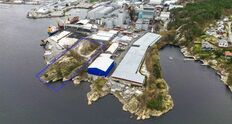- Greenstat acquired Everfuel Greenstat Production 1, now Agder Hydrogen Hub AS.
- ENOVA supports the project with a grant of up to NOK 148,000,000.
- Construction of the 20 MW hydrogen facility starts in early fall 2024.
- Production of green hydrogen for maritime use begins late 2026.

Project Acquisition and Renaming
Greenstat ASA, through its subsidiary Greenstat Hydrogen AS, has acquired all shares in Everfuel Greenstat Production 1, now renamed Agder Hydrogen Hub AS. With La Française de l'Energie (FDE) as the new largest shareholder, Greenstat ASA has secured the necessary capital for hydrogen production at Fiskå in Kristiansand.
Project Details and Funding
The Hydrogen Hub Agder, fully owned by Greenstat, involves constructing a 20 MW hydrogen facility to supply green hydrogen to the maritime industry, with production expected to start in late 2026. A second 40 MW phase is planned for 2027. ENOVA will support the project with a grant of up to NOK 148,000,000, covering over 40% of the total investment. Greenstat has committed to advancing this project in collaboration with Enova, a Norwegian Ministry of Climate and Environment entity.
Strategic Location and Permits
The project is strategically located to serve the growing hydrogen market, with a long-term lease agreement signed with partner Elkem. In 2023, the project received construction approval from Kristiansand Municipality for the 20 MW plant. Four additional permits, including those for material handling and quay front preparation, were also obtained in 2023.
Next Steps and Future Expansion
Agder Hydrogen Hub AS will finalize the facility's detailed design and complete sales contracts for compressed hydrogen to maritime customers. Construction is set to begin in early fall 2024. Once operational, the facility will offer green hydrogen as a carbon-free maritime fuel for traffic along the Norwegian coast and the North Sea basin. The production could also serve zero-emission vehicles and construction machinery in the region, with potential expansion to an additional 40 MW as the market grows and power becomes available.

